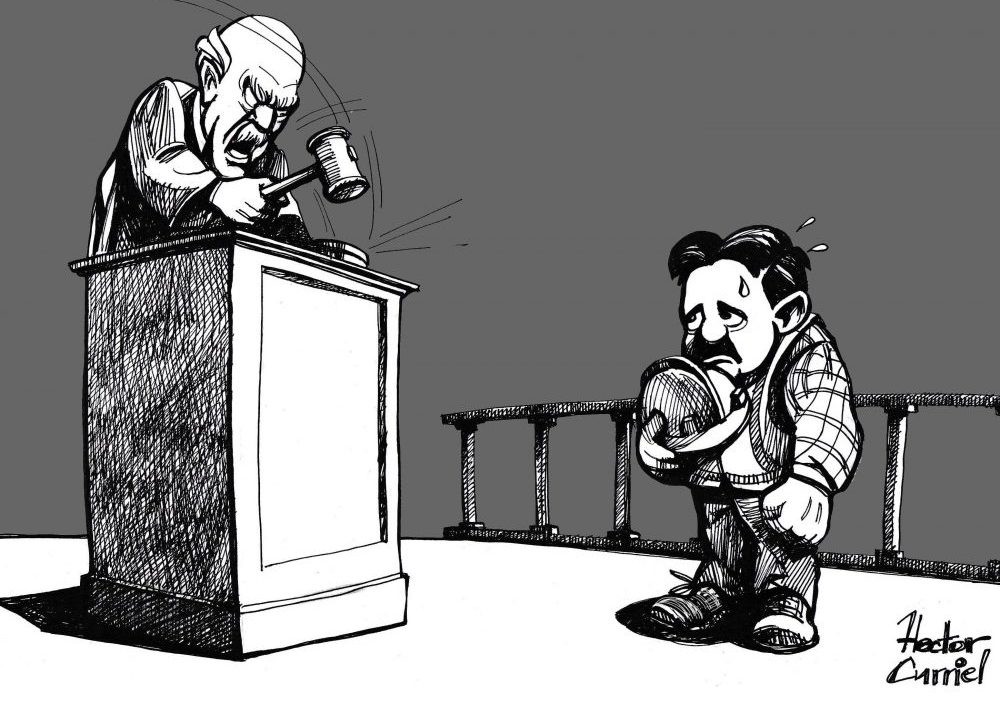Project Delay Penalties – Too Much or Just Right?


Some say the “penalty phase” of large project contracting begins when you learn you are the low bidder and then it just never ends. Some say it’s a way to blunt legitimate claims, shift negotiating leverage in favor of the owner, be a Sword of Damocles, or a barrier to entry of the undercapitalized, to stay clear if they bid in fear. For owners, it’s a required tool to keep the project moving and public tax dollars delivering on projects when due.
For owners and owners reps reading this, it’s equally important to look at the LD and delay situation gyroscopically, not just grounded in the spec language though that controls. To take into account the motivating levers on any project for success, and make “time” a mutual friend, not the Grim Reaper of your project. All of which starts pre-dawn with relationship, communication, team building, and problem-solving with in mind the project and end users as client stakeholders, not just the three delivery teams – contractor team, owner and designer team, and support teams.
So then, how to grapple with a behemoth LD clause out of step with the market and which has raised the eyebrow of your banker and bonding company ? Is any LD rate just “too big” to be fair to all concerned? Or is it all just “price point” for a contractor to “bid in” the risk, and pray often?
A Bit of Background – why are LD’s Mandatory?
The law in most jurisdictions is that public entities must include a time penalty or liquidated damages clause in every public works contract. And that is fair. Public Infrastructure in particular is usually free to the using public except through the taxes and bond debt that finance them, toll roads and bridges aside. Such projects are called for because already needed, either as a new project or replacing outdated or unsafe works. At “Notice to Proceed” the project starts one or two years behind the need that created it, by the time all the studies are done, mitigations considered, and political budgeting finished, and the design stage. So, a sense of urgency is required – the taxpayer is entitled to get a “now” bang for their bucks.
In legalese, LDs are a fair measure of a deductive risk to protect the public expecting to go on line on x date, from loss of use by user groups, as well as added inspection costs to the public agency from an extended performance period due to delay. These things are hard to measure, unlike a movie theater or restaurant that fails to open on time, where the “take” can measure lost profits from delay. So liquidated damages is a fixture in public works specifications, will always be, and needs to be. And is good policy. So why all the complaining?
The Three Ds – Details, Devils, and Delivery
So now comes the details – the potential devils in today’s marketplace of “big and bigger” projects where the contractor is often a consortium or JV because of the huge risk load of major projects, whether Massachusetts “Big Dig” or the San Francisco-Oakland Bay Bridge replacement. In some jurisdictions, notably California’s Department of Transportation, the LD rates are set by size (engineer’s estimate) of project, and typically imminently fair, if not underpriced. Yet, when LDs are individually set, as opposed to in a continuum – study of reasonable loss of use and inspection costs impacts – LDs can take on more than either sword or shield. Misued, or oversized, LDs can be disruptive to the orderly delivery of the project, as a club that overshadows its purpose. And there is really nothing anyone can do, unless Legislature’s “cap” LDs or require like Caltrans some across-the-board approach that is project blind and neutral, and study-driven on what the true cost to the public and public agency is from delay.
A Chinese philosopher Lao Tzu is quoted, “the more crimes, the more criminals.” This could apply to the way LDs are thought of – unlike line item deducts, imposition of LDs continue to unfairly be viewed as if stigma, and threat of stigma as “bad contractor.” Therefore LD negotiations raise more ruckus that other end of the project horse-trading over changes and deducts. The dollars matter more; they have a reputational element, and I suppose, a “Yelp” element. That needs to change – how, is down the road. But for owners to effectively impose time as a cost penalty, and it be just that and not a “moral” penalty, the industry including pre-qualifications must take into account that late delivery by a few days has an exchange mechanism may not be a major breach, but a priced in deduct that was woven into the bargain. Were it so easy.
Two Examples of LD mechanisms that were tailored to large critical Infrastructure projects
These are not easy questions. But let’s take an example. Consider Boston Harbor’s $1 Billion of upgrades and the allocation of LDs per discrete project based on a formula allocating owner’s extended costs across the entire suite of projects to each contract pro-rata. Some may say that benefits each contractor as each does not want to be disrupted by the “next guy” or the “guy before me”, to avoid contract stacking – or what I call “crawdads in the bathtub” – each contractor fighting out of a corner, but as the water drains, on top of each other claws snapping. But it seems a fair way to go, buy in or not.
At times a huge penalty has had reason. It can serve as a marketing tool for an alpha contractor to step up and save the day – most memorable is the replacement of the fire damaged approach to the SF Oakland Bay Bridge, where the bid had a $200,000 per day bonus up to $5 million for finishing early. The shockingly low bid got the job, and the streamlined on site engineering decision-making support from Caltrans makes it a success story rivaling “Mike Mulligan and his Steam Shovel” read to our children about “can do” spirit. Everyone won.
Borrowing from the little guy playbook
In small but high end home projects, I advise my contractor clients when faced with an overly aggressive LD clause, plucked thoughtlessly from a public works contract template, to make these three pitches to the owner:
- You hired me because of my high end skill, which took years of training artisan level crew. Speeding up risks quality, as I cannot replicate the crew’s years of skill by new hires or acceleration. Build your Rome, and it will be grand even if not built in a day.
- Let’s cap the LDs or stagger them, a small slap for the first 30 days, of $100 per day, and then double it to $200 per day and cap it at $20,000 or measured by your rental costs or construction loan interest rate until done. Measure it tight.
- And, have a reciprocal bonus clause the other way for early completion.
Seldom can a public works contractor negotiate these way. It’s a spec and bid item.
Some hidden motivators for high LDs
Some will say with reason that high LD rates are just a fair “ante up” that excludes undercapitalized contractors from the bid list, if they fear time will eat them up. That is, high LDs are a form of indirect “prequalification” that is a barrier to contractors without very large operating lines of credit and firm surety backing. And maybe that is as it should be. The government is placing a big bet on the low bidder, and if he fails, there needs to be a price, not just a disappearing act.
There is also the “fear of God” LD clause that is more a Teddy Roosevelt “walk quietly and carry a big stick” motivator. So too, many contractors complain that too often an LD clause is used simply as a negotiating lever to whittle down money due for legitimate extra work and owner caused delay. Owner complain conversely that many money claims smell iffy if not reactive whole cloth as a way to negotiate down LDs that have merit. Molasses wins again. This paradigm is not going to go away, but perhaps, a reset can help it be the exception and never the rule.
Some may suggest that a “supersized” LD rate is a sign the owner’s team feels outmatched and outmuscled by a shock and awe contractor on a $500 million or more project. This is their only tool not to get run over. Maybe, but there are better more surgical countermeasures to being dwarfed by the contractor’s resources. Mainly, the handshake, and smart, timely reactions not hiding behind emails that are, nyet, nyet and more nyet. Try yes early on small partnering moments, and see what happens.
Parting shot – get customer driven when you can, firm when you must
The point I suppose – any time-based penalty, whether a late fee on a credit card bill, LDs in a construction contract, or the groom being late to the wedding – is going to have a high cost. In the end, It’s a customer management and expectation tool. By definition, the higher the price to be paid to the piper for delay, the greater the duty of the piper not to get in the way, but to facilitate smooth delivery and sailing.
So, when faced with a fat LD clause, it will not likely do much to fight City Hall. I have seen cases where contractors have argued the LD rate was exorbitant to the point of unconscionable, but that is a Hail Mary – and not one thrown by the Packers Aaron Rogers. A better strategy is the one implemented with Caltrans with the incentive bonus and cut red tape on inspection and RFI turnaround – same team it. Both sides want off the job and on to the ribbon cutting ceremony. That will keep the risk of excess in check.
Oh, and don’t forget. Read the contract and have forms ready for time extension requests. I now recommend contractors have a designated TIE (Time Impact Analysis) Team of more than the project delivery team, to keep up with some owner’s view of what level of paperwork is required to document the time extension, essentially is somewhere between another change order or a wholly new project or bid itself. The war weary troops facing the change need reinforcements and new, critical eyes. A “Swat Team” that includes the project manager, a junior estimator, a scheduler, and a document honcho will help resource the claim without causing the line work to suffer. Just a thought. And train for it, so when it happens, it’s like the Marines landing.- you know it, and they know it, and it works.
Why are Liquidated Damages (LDs) mandatory in construction contracts, and what purpose do they serve?
LDs are required in public works contracts to measure deductive risk, protect public interests, and compensate for loss of use and added inspection costs due to project delays.
How can contractors negotiate or deal with high Liquidated Damages (LDs) rates in a construction contract?
Contractors can propose capping or staggering LDs, suggest reciprocal bonus clauses for early completion, and emphasize the value of craftsmanship and quality over speed to address aggressive LD clauses.

















